Let’s face it: sales prospecting is hard. It may be the hardest part of your job as a sales rep. It’s also one of the most critical since, without customers, every business—without exception—will fail. It doesn’t matter if you’re Google or a mom-and-pop cupcake shop. The hard truth is that you need customers to survive.
The thing is, customers don’t just spring up out of nowhere. They must be identified, nurtured, and guided through a long, often lengthy sales funnel until a sales rep finally closes the sale. The more sales prospects you have, the greater your odds of success. And you can’t make it happen without prospecting.
This handy guide will teach you everything you need to know about effective sales prospecting. You’ll learn techniques, tools, and tips to help you and your sales reps do the job more efficiently.
What is Sales Prospecting?
Sales prospecting refers to identifying potential customers, clients, or buyers for your business—finding leads and turning them into prospects. This is achieved through a number of sales prospecting techniques and channels, ranging from the traditional cold call to email outreach and social selling.
Although prospecting is ultimately driven by a broader goal of generating more business, the focus of this stage shouldn’t be closing sales but finding the right people and nurturing them along the sales pipeline. Sales prospecting is the first step in the sales process and is often executed by development reps, who focus on the early stages of the sales cycle.
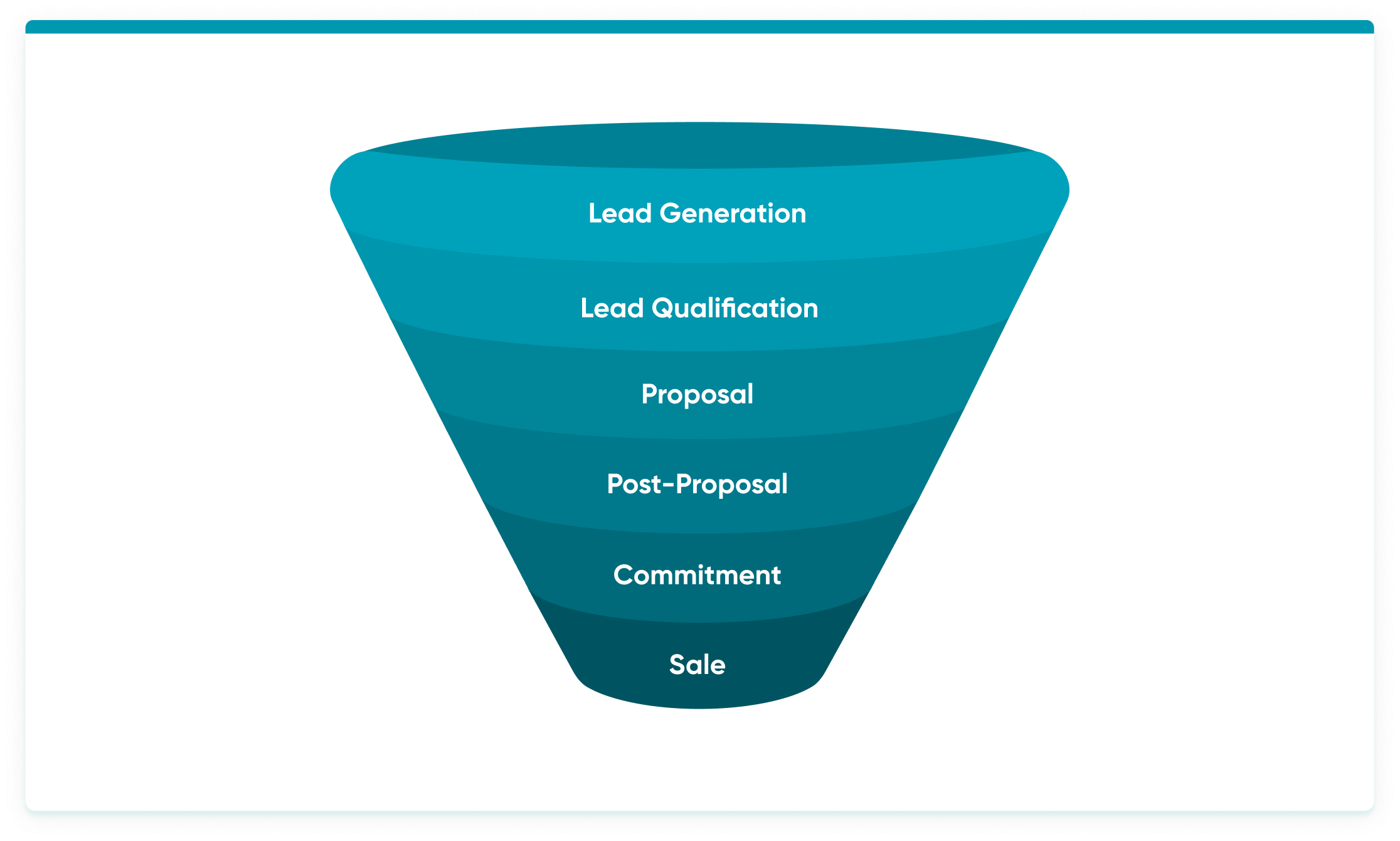
Takeaway: You need to identify the right people to sell your company products and services before moving further in the sales process. This first stage is known as sales prospecting.
What’s the Difference Between a Lead and a Prospect?
Generally speaking, a lead is a potential customer you have begun to nurture but aren’t yet ready to be pitched or sold to. If they haven’t yet indicated that they’re open to your offering, they’re a cold lead at the top of the funnel.
On the other hand, they may have expressed an interest in your product or service by visiting your website, downloading your whitepaper, or subscribing to your e-newsletter. They might have even contacted your sales team directly or fielded questions from your customer support reps. In this case, they’re a warm lead. However, they haven’t yet been qualified—that is, identified as a good fit as a customer.
A prospect is a potential customer who has not only expressed an interest in your offering but has also been determined to be an ideal match for your product or service. In other words, they’re a lead that has been qualified.
Takeaway: A lead is a potential customer who has expressed interest in your product or service but hasn’t yet been qualified. A prospect is a lead identified as a strong fit with your offering—your target customer. This is someone who has been qualified.
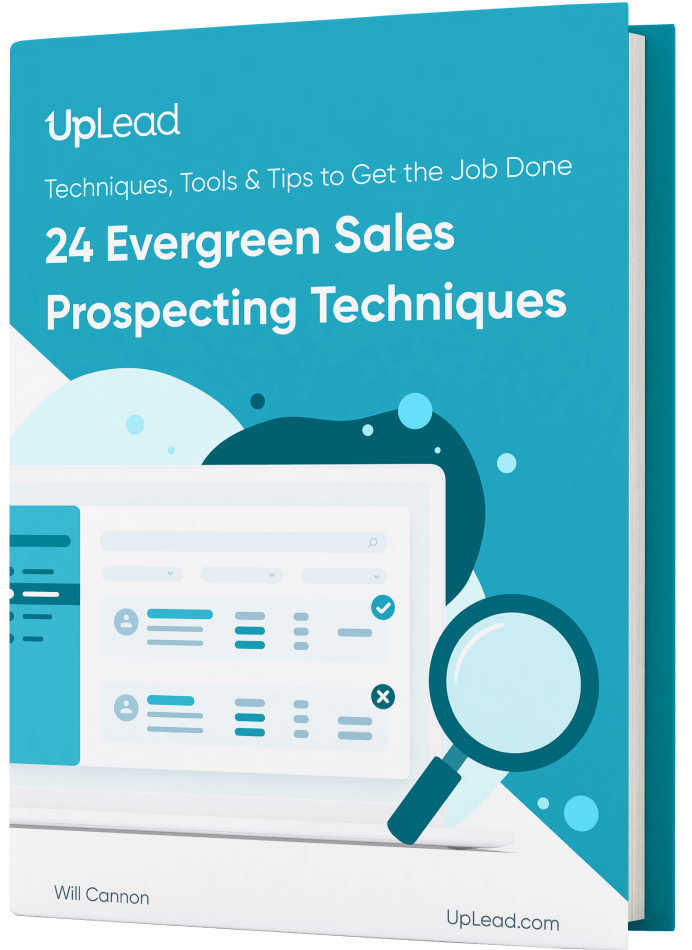

How Do You Qualify a Sales Lead?
Effective sales prospectors know that even if someone has indicated they might be willing to buy from you, it doesn’t mean they’re actually going to. It is vital to determine whether or not they need your solution to fulfill their pain points before your sales reps contact them. This will prevent wasting sales rep time and resources on a futile lead. In sales speak, this process is referred to as lead qualification, and it’s a critical part of the sales cycle.
Different methods exist for qualifying leads and preparing them for your sales reps. One way that’s particularly effective is called BANT, which stands for Budget, Authority, Need, and Timing. BANT is a general guideline for your lead qualification process, which lays out particular criteria by which to evaluate a lead. Here are the different factors to consider:
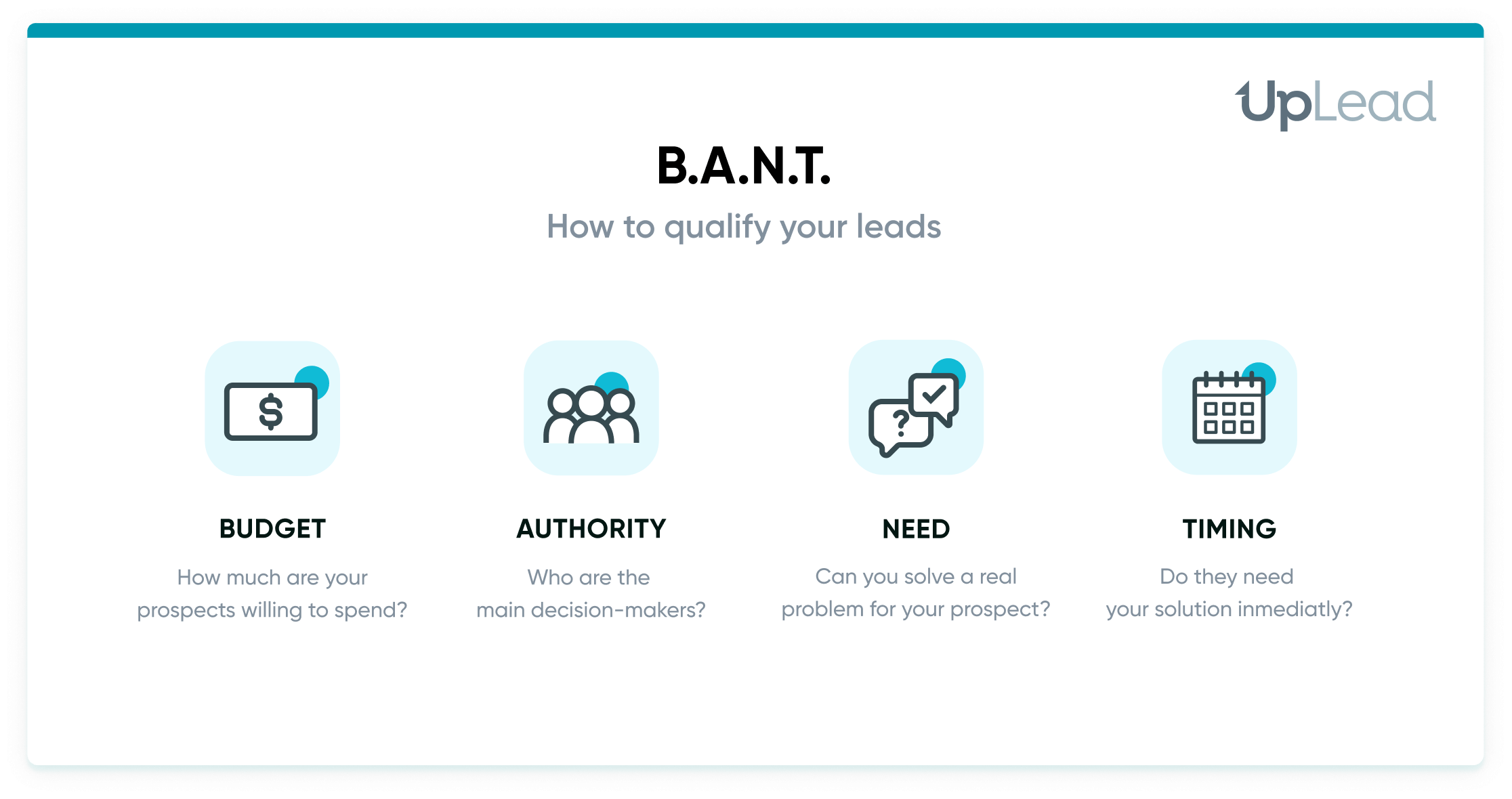
The Prospect’s Budget
Whether prospecting clients, B2B buyers, or general customers, your sales reps need to identify any budgetary constraints before qualifying a prospect since this can pose one of the biggest potential obstacles to closing. Try to filter out leads who may not have the resources to make a purchase and focus on the ones who can.
The Prospect’s Authority
It’s pointless for a sales rep to engage with someone who doesn’t ultimately have the authority to make buying decisions. This can be especially tricky to evaluate in a B2B environment—according to Garter, the typical buying group for a complex B2B solution involves 6-10 decision-makers.
[For example, if you sell B2B marketing software, you may communicate with a marketing manager responsible for researching different solutions and presenting them to her boss—the person who will ultimately choose which one to purchase.
Make sure your sales team takes the time to determine whether or not your leads are in a position to decide on your product—or influence the people who are—before qualifying them as prospects
The Prospect’s Need
Before you begin sales prospecting, you’ll also need a solid understanding of your target audience. Understanding your customers and why they’re doing business with you is important. Specifically, what are their pain points?
The best way to uncover this intel is to study your current customers. Take the opportunity to speak with them regularly and uncover customer pains. Go to your sales team and ask your sales reps for feedback on potential customers and how they convert. This will help you know your customers better and give you a stronger sense of your value proposition and what you have to offer your prospects. Comparing leads against your customer profile will help you move ahead with the strongest prospects possible.
You can also build out a buyer persona, a semi-fictional representation of your ideal customer, which typically combines market research and relevant data points about your current customers (including location, demographics, goals, etc.) This will give you a clearer picture of the type of person you should keep in mind throughout all your sales efforts.
Does the Prospect Need Your Solution Now? – Timing
You’ll also want to examine the timelines for any lead you consider pursuing. For example, will they require your solution immediately? Will you be able to prepare a pitch in time? Or will you have more time to nurture the lead, cultivate the relationship and move them down the sales funnel? These are important factors to consider when identifying who your prospects are.
Takeaway: Even the sharpest sales techniques won’t be able to convert someone who’s mismatched with your company. That’s why lead qualification—evaluating a lead’s compatibility with your offering—is so important for prospecting reps. You can do this by examining your leads’ budget, Authority, Need, and Timing and identifying possible roadblocks. This process is also referred to as BANT.
The Sales Prospecting Lifecycle
The sales prospect lifecycle can be broken down into the following stages:
How To Research Sales Prospects
We already know it’s important to research before qualifying a prospect as a lead. But what happens once you’ve identified your leads? Not all leads are created equal—according to HubSpot, only about 10% of leads actually turn into customers. That’s why it’s so important to use tried and true sales prospecting methods, so you can ensure that—from the beginning—your efforts are directed to people most likely to convert down the road.
If you’re looking to get a little more granular, lead scoring can also come in handy. Lead scoring refers to ranking your prospects based on varying attributes to see how they stack up. This makes it easier to determine who to prioritize when nurturing leads.
How to Grade Lead Quality
The best way to start with lead scoring is to look at your current customers. To establish a benchmark, you’ll need to calculate the percentage of previous leads that ultimately converted into customers. From there, you’ll be able to figure out your conversion rate. Here’s the formula:
Total Number of Conversions / Total Number of Leads * 100
The next step is to mine your customer data. This will help you identify commonalities among contacts who became customers and those who didn’t. Then, compare the close rate of each attribute to identify which ones are most important.
For instance, if you notice that a significant portion of customers read your company’s e-newsletters before they make a purchase, you might assign a higher point value when assessing the open email rates of your leads. Alternatively, the geographic location of your customers is all over the map. You may decide it doesn’t really matter where a particular lead lives.
The key here is to identify which attributes will indicate whether or not someone will convert. Once you’ve established a framework for evaluating the likelihood of conversion, you can assign your points accordingly. From there, you can determine your high-value targets and build your prospecting list.
Takeaway: Lead scoring helps you determine which customer attributes have the highest close rates. This, in turn, will enable you to identify the most important factors when evaluating prospects and predicting their likelihood of converting. Once you’ve got this system in place, you’ll be able to assign points to each prospect and find high-value targets.
Research Your Target’s Social Media
While data is a critical component of the sales process, it’s important to remember that each of your prospects is a real person, including your high-value targets.
In the age of personalization, generic outreach, and randomized cold calling aren’t going to cut it. If you want to tailor your prospecting to the individual, you’ll need to know much more about them than their demographic profile. Social media is an invaluable tool to dive behind the data and learn about your prospects as people—before you attempt to contact them.
Social media use to find, research, and engage with potential customers is known as social prospecting, and it provides the perfect opportunity to conduct in-depth research. Are your prospects sharing their professional insights on LinkedIn or Quora? Are they participating in industry-focused conversations on Twitter or sharing their recent blog posts?
Pay attention to the content your prospects share with their professional networks. This will help you better understand their particular needs and pain points. Once you’re armed with this golden knowledge, you can craft a customized pitch that positions your solution as the best possible solution—better than your competitors.
Takeaway: Finding, researching, and engaging potential customers on social media—otherwise known as social prospecting—will allow you to learn more about your prospects and uncover their particular needs and pain points. Once armed with this information, you can create a customized pitch that uniquely positions your solution as the optimum solution.
Make the First Sales Connection
Find Your Leads Using Tools
The idea behind B2B list building is relatively straightforward:
- You determine your ideal customer (possibly with the assistance of customer profiling software)
- You identify which companies you want to target.
- You hit the web, searching for their contact information.
- You validate that contact information.
- You’re good to go
Easy peasy, right?
The reality, however, is that it can be tedious and time-consuming to manually build your list (especially if you have to source the leads yourself without any marketing support). Fortunately, there are plenty of tools out there to help you.
Customer Data Platforms
B2B sales software like UpLead, provided by yours truly, was designed to make prospecting much easier. We’ve compiled a database of over 160 million contacts and millions of companies across 200+ countries worldwide. All you must do is plug in a person’s name and company. UpLead will provide you with the relevant info, including contact title, job function, management level, email address, phone number, social media links, and a lot more.
You can also build targeted lists using over 50 different criteria and get into the nitty gritty by profiling target accounts based on their technology stack.
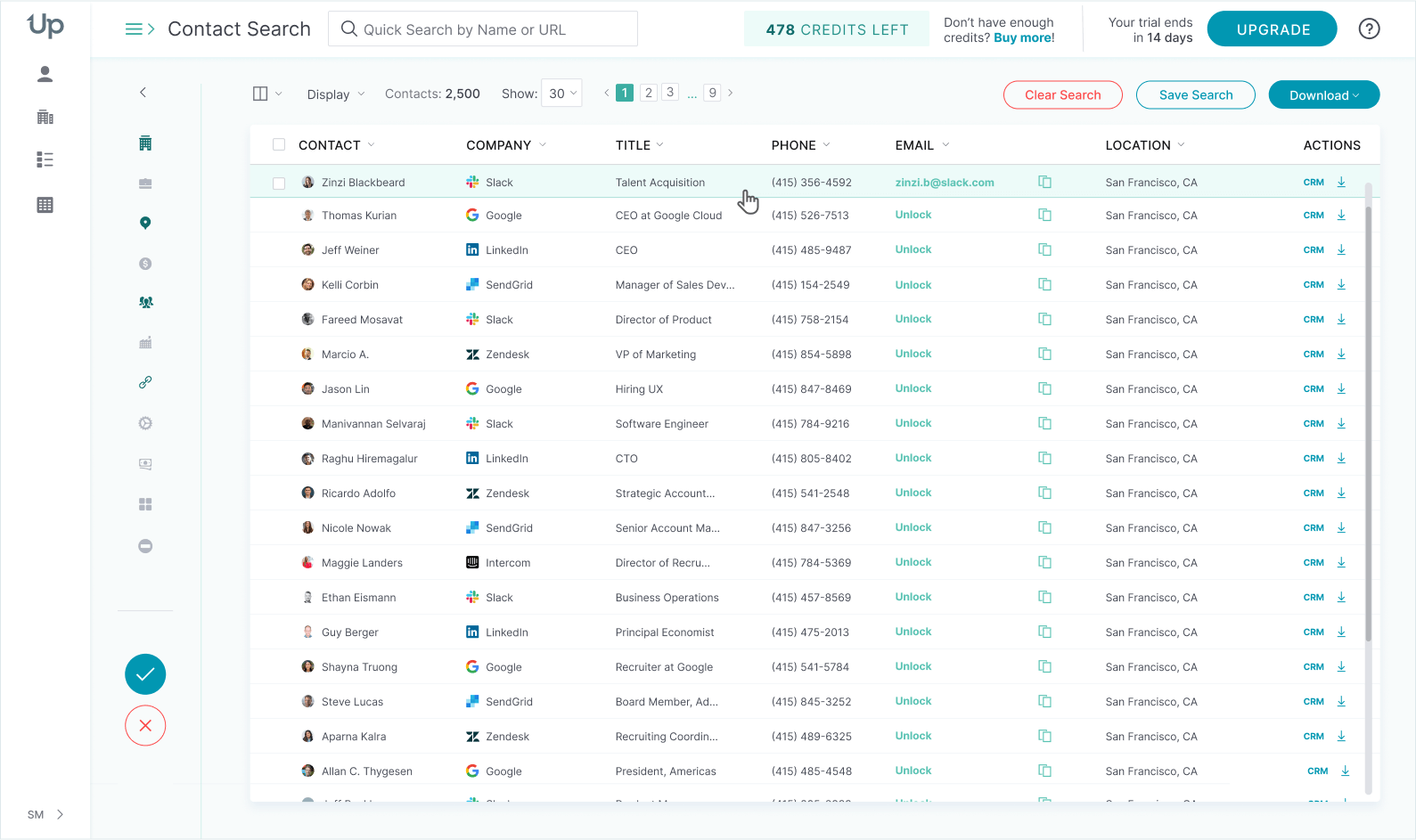
We’ve also built in handy features like real-time email verification to save you hours of time. You can easily import all your lead and prospect data into your chosen CRM—UpLead integrates with Salesforce, HubSpot, and Zoho, among others.
Industry News
Keeping on top of industry news will help you be a better salesperson. Period. For starters, being knowledgeable of the latest trends will help you anticipate your prospect’s needs and any challenges or fears you can address in your sales pitch. Similarly, you’ll be better positioned as an authority within your industry.
If you’re in SaaS sales, following industry news will also alert you when a target company has received new funding—and the new net budget that goes with it. Where can you find this info? Few websites like TechCrunch have their finger on the pulse of the startup/tech world. It’s the perfect site to comb for tech industry trends and the scoop on who’s getting funded.
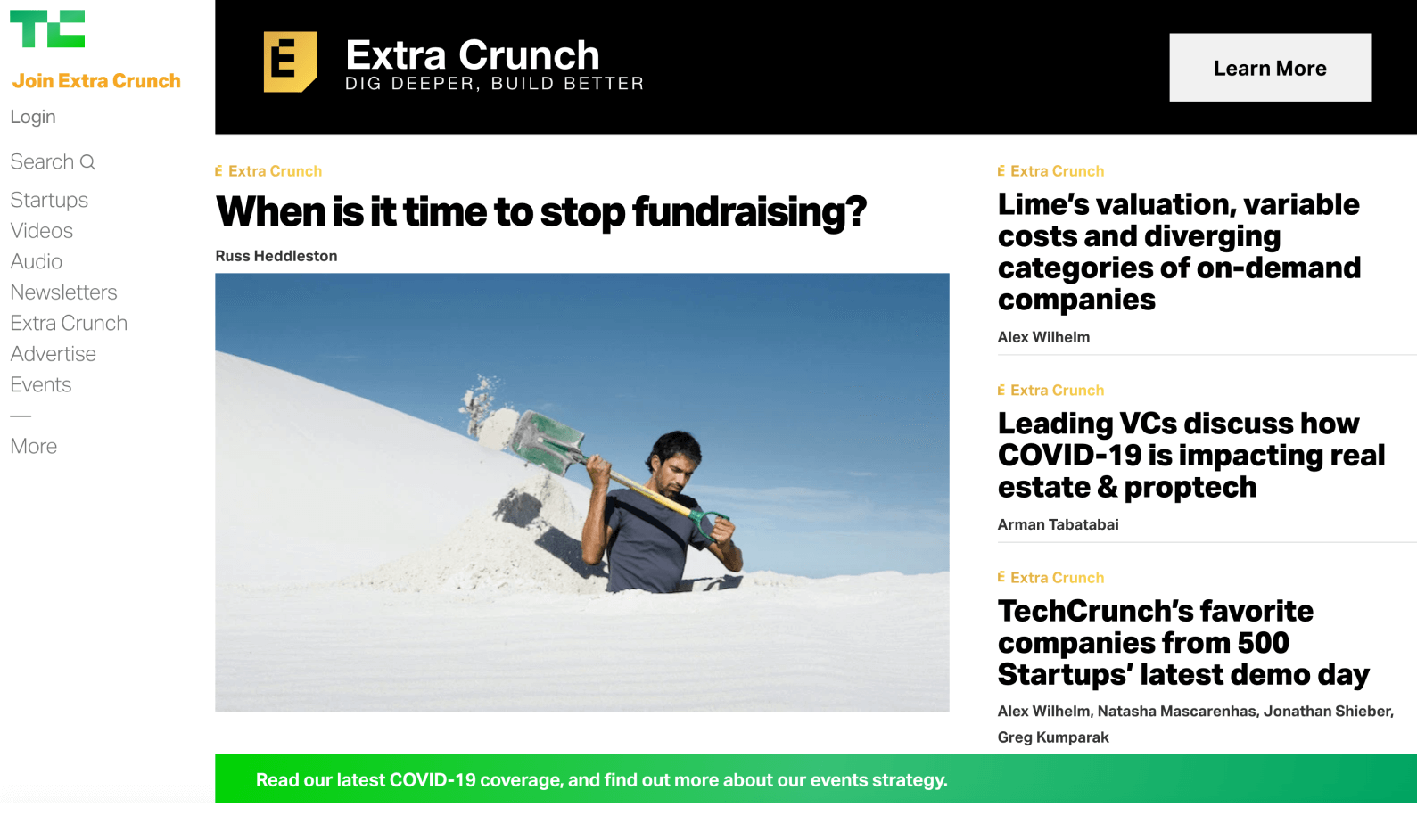
You can also use a tool like Mention, which alerts you to social media mentions of your prospect’s company. This knowledge will help you generate material for your exchanges. For instance, you can incorporate a congratulatory message on a recent company milestone into your outreach email for an extra touch of personalization.
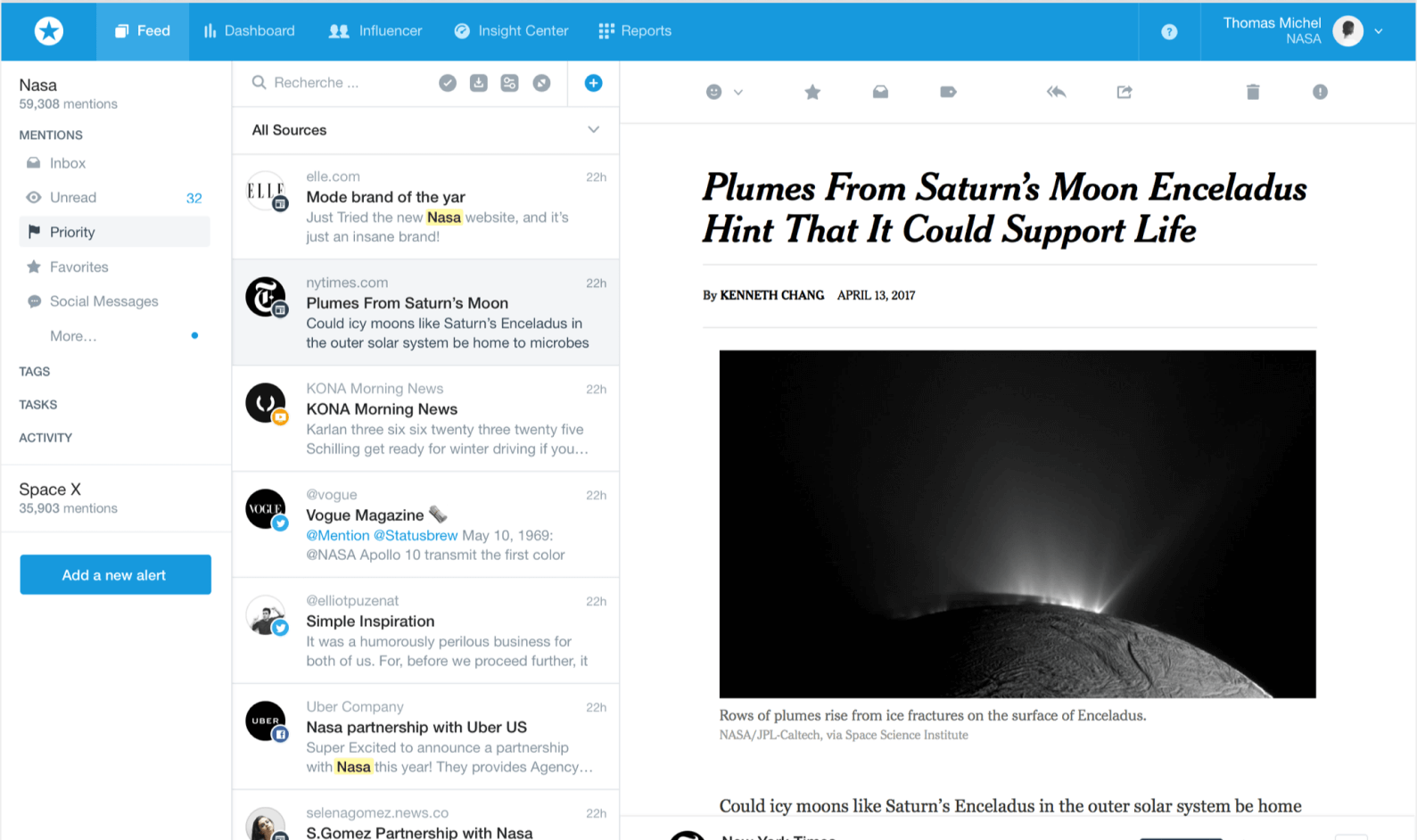
Takeaway: Stay updated with industry news, trends, and forecasts to better anticipate and address the needs of your prospects.
Social Media
Your social media followers have already indicated that they’re interested in what you have to say, even if they haven’t explicitly said so. Tools like Followerwonk will help you analyze your Twitter followers, sift out potential leads, and provide valuable intel, like when high-value users are most engaged.
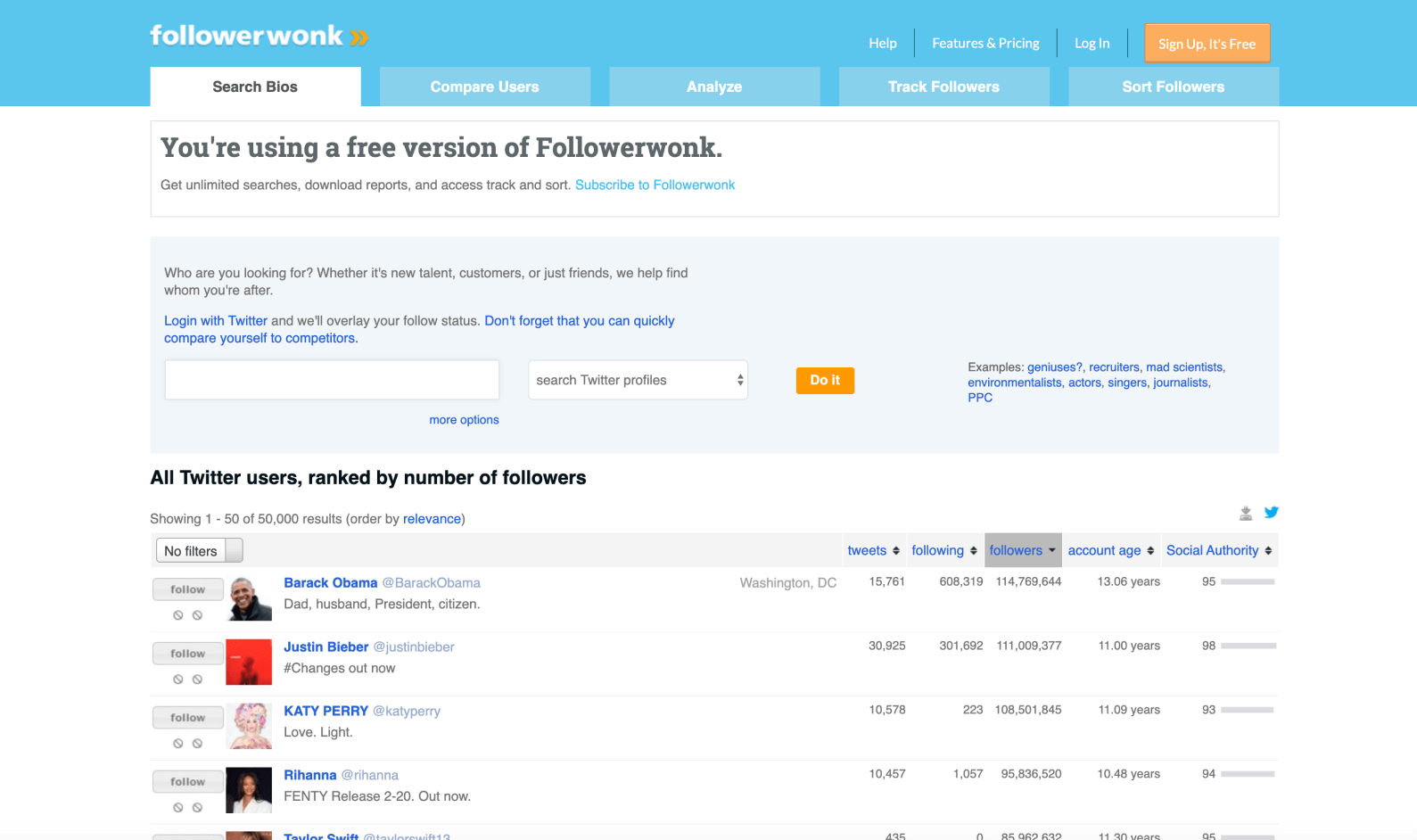
As we’ve previously discussed, social media is an excellent place to conduct research on your target audience. It’s also a great place to find new leads to nurture through your sales funnel.
First, identify influencers in your niche who are posting engaging content on LinkedIn that’s relevant to your solution. Then, use a tool like Phantombuster’s LinkedIn Commenters to scrape the names of everyone who has liked or commented on a particular post.
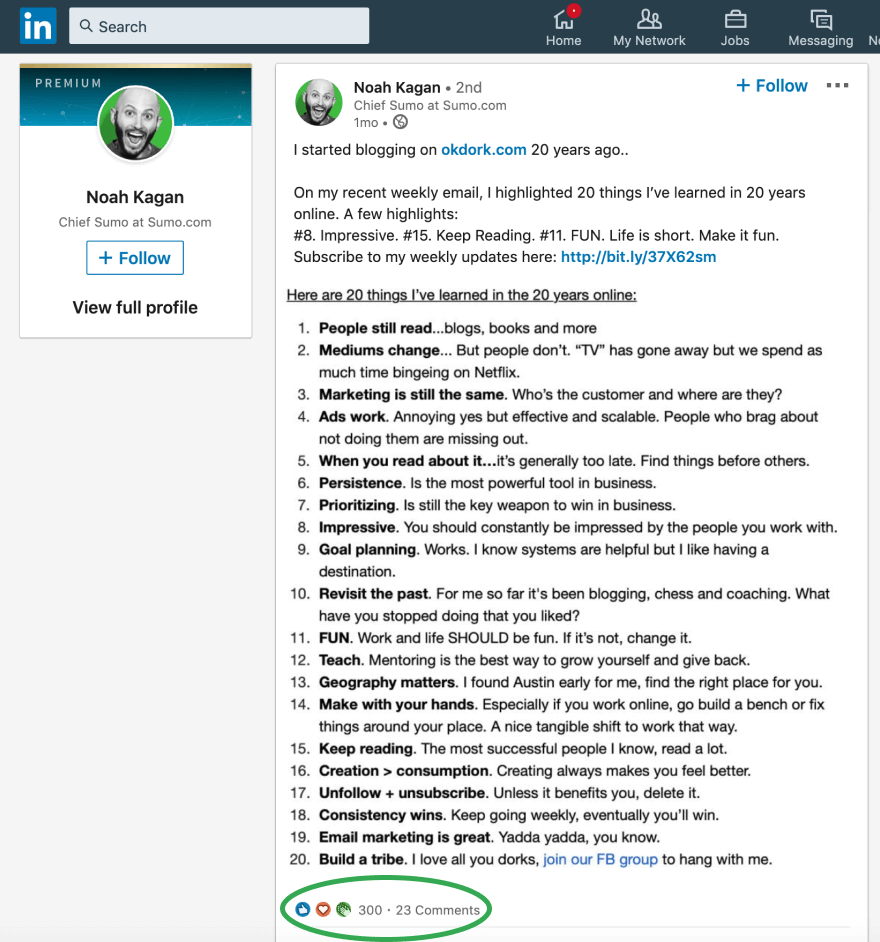
Once you’ve extracted all the names, load them into a spreadsheet or CRM and begin searching for contact info.
Takeaway: Social media is an excellent tool for conducting vital research on both leads and prospects alike. Use tools like Twitter and LinkedIn to identify influencers and trends within your industry and get real insights. This will help you qualify stronger leads earlier in the cycle, so you or your sales reps have a better chance of closing them in the future.
Prioritize Your High-Value Targets
Your high-value targets are leads that have been qualified and subsequently identified as prospects. These are the people who are more likely to convert. The key is customizing your prospecting—and entire sales pitch—to their particular needs.
This can be time-consuming if you deal with a high prospect volume. However, with the right automation tools, you’ll be able to scale your efforts while still providing a personalized approach to your sales. Templates will become your new best friend because they provide a framework that can be deployed en masse while leaving room for personalization.


How to Start Sales Prospecting
You can use many different sales prospecting methods and techniques to generate new leads or effectively engage with your current ones. These include:
Networking
There’s a reason why networking is such an effective sales prospecting method. You can build a relationship with potential buyers and reconnect with contacts you may have previously converted into customers. Why is this important? Because they may be willing to vouch for you and your company and introduce you to their networks.
Before you dive in, however, it’s important first to identify the right networking events. Make sure the topic of the event is actually relevant to your industry, as well as your ideal customer.
Referrals & Intros
Referrals and intros are another excellent sales prospecting technique. Because successful prospecting (and—you can argue—sales in general) is really just relationship building, it helps to get a leg up in the form of an introduction or referral. These can be super informal but tremendously effective. All it takes is one of your contacts shooting a quick email or LinkedIn message to someone in their network, and you’ve got a potentially warm lead just waiting to be qualified.
Folks tend to trust what others are saying about you more than anything you’re saying about yourself—even if you have the snazziest copy and an excellent pitch. Just look at how critical online reviews are. Needless to say, having a third party vouch for you will put you ahead of the competition.
Unfortunately, this particular sales prospecting method is easy to abuse. Before you start nagging all your contacts for intros and referrals, it’s important to recognize that quality is more important than quantity. You only want to be connected to promising leads with a high probability of qualifying as prospects, so it’s important to be strategic in selecting who you approach with your request for an intro. Otherwise, you could risk annoying your entire network and have little to show for it.
Trade Shows & Conferences
Quiz time! Would you rather buy from someone who speaks only about their product or service or someone who can also speak to the latest trends and challenges in your industry? Who would you trust has a better idea of your particular pain points? After all, anyone can do their homework on a company, but it takes concentrated effort to gain the knowledge to speak as an authority on a particular industry.
This is why trade shows and conferences are an effective sales prospecting technique. These events are excellent ways to keep a pulse on what’s happening in your industry. It’s also a great opportunity to schmooze, make small talk, and connect with new leads.
Warm Calling
Few people enjoy receiving cold calls, especially if they aren’t relevant and don’t speak to their particular needs. Warm calls, however, enable you to connect with people who have already demonstrated an interest in what you have to offer. You’re not just punching in any old phone number; you’re reaching out to people who will likely be a good fit for your product.
Although many inside sales reps dislike hopping on a call, this is a critical prospecting technique, especially if you’re speaking with C-level executives in a B2B sales cycle. Hopefully, before you pick up the phone, your leads have already been qualified. Hopefully, you’ve done your homework, so you know their particular challenges.
An ideal formula when warm calling is to focus on the customer but incorporate valuable information you have to share. Addressing industry trends and how you’re helping your present customers adapt can also be beneficial. You should also be prepared to offer proof, referencing real success stories and use cases.
Preparing a script before hopping on a sales call is always a good idea, but try not to get too granular. It’s better to have your introduction written, followed by key points you want to address in the conversation. You’ll risk sounding robotic and unnatural if you script the entire call.
Email Outreach
Email outreach is another sales prospecting method that can yield incredible results, provided you do it immediately. Don’t just blast your contacts with promotional email messages. Effective email outreach is all about building upon your relationship with prospects so they’re more likely to make a purchase down the road. From the initial introduction to confirming meeting times to follow up with valuable resources, email is a great way to keep your contact in the loop at every stage of the sales process.
Webinars
Webinars are a fantastic way to source leads because they enable you to connect with people interested in your industry or a topic related to your product or service. It also offers the perfect opportunity to demonstrate your expertise and thought leadership, build trust, and establish street cred. Sites like Webinar Jam make it easy to host your own webinar and collect contact information from leads.

Social Media
With the right approach, social media can be a highly successful sales prospecting technique. Focusing on the right channels will not only help you track down quality leads but will also enable you to forge relationships with your ideal customers and increase trust in your product or service by establishing thought leadership. That means creating and publishing relevant content and becoming known as an expert or thought leader in your industry.
How do you become a thought leader? Join groups on LinkedIn and engage in discussions related to your industry. Answer questions on Quora. Build an online presence that positions you as the best possible person to address your customer’s needs.
The Best Sales Prospecting Tools
Now that you know more than enough sales prospecting techniques, it’s time to look at some of the best sales prospecting tools to make the process easier. We’ve organized them based on the following stages of sales prospecting:
- Creating a Sales Prospect List
- How to Find Email Addresses for Sales Prospecting
- Enriching and Gathering Sales Lead Information
- Making Cold Calls
- Scheduling Sales Meetings
- Sending Sales Emails
Creating a Sales Prospecting List
As we’ve mentioned, you can’t get leads in the door without a prospect list. These tools will help you get started:
UpLead – A Quick, Easy Way To Pull Thousands Of Valuable Contacts
There’s a reason why we love this tool so much, and it’s not just because it’s our own. UpLead provides an invaluable database filled with thousands of key contacts in various industries. You can customize your list the way you want with endless search filtering options. Over 50 filtering options include job title, industry, zip code, location, job function, and management level.

Apart from the 7-day free trial, UpLead has three pricing options:
- The Basic package is $99 per month
- Plus is $199 per month
- Professional $399 per month.
Check out the pricing plans in more detail here.
LinkedIn – One of the Best Ways to Find and Connect With Employers and Clients
LinkedIn started out as a social recruitment platform like Facebook, only for the business world. Whether you’re looking for prospective clients (LinkedIn leads generation) or a platform to sell your services, a LinkedIn package can help you.
The Basic package is $29.99 per month but is essentially useless for sifting for leads. Premium Business, however, will set you back $59.99 monthly, granting you access to Sales Navigator. This contains some handy features, like the ability to send messages to any LinkedIn user (whether connected to them or not) and an advanced search function/lead builder, which lets you create custom lead lists with advanced search functions.
How to Find Email Addresses for Sales Prospecting
There’s no question that email is a critical sales and marketing tool, especially in the B2B space. In fact, according to the Content Marketing Institute, 75% of B2B marketers consider email one of their most-effective marketing channels. But finding emails can take a long time, especially if you don’t have any tools to help you. Here are just a few which will significantly speed up the process:
UpLead – Get Current Email Addresses of Thousands of Companies Quickly and Easily
Our tool lets you find current, up-to-date email addresses for thousands of leads relevant to your market. With the advanced search option, you can find the perfect leads for your business–and their email addresses. Again, the three packages are $99, $199, and $399—with a 7-day free trial available on the package of your choice.
Hunter.io – Find Email Addresses
Hunter.io lets you search for email addresses by the company and export your results to CSV files. Various plans are available, including a free option that lets you try out the software. Hunter costs anywhere from $39 to $399 per month for continued use, depending on your needs and preferences. UpLead is a solid Hunter.io alternative.
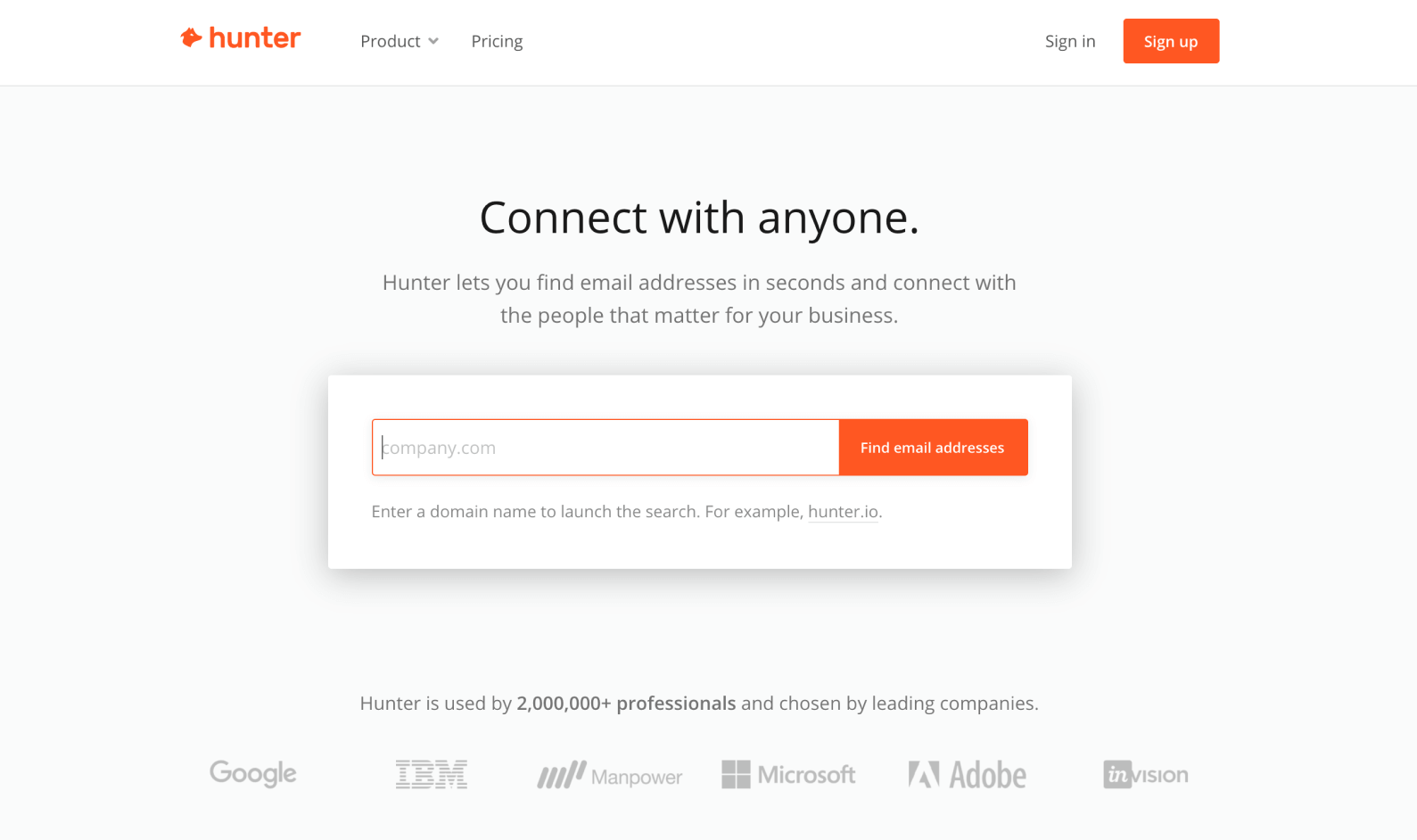
Voila Norbert – A Specialized Tool to Find the Right Email Addresses for Your Lead Pool
Voila Norbert makes it easy to find current email addresses of corporate decision-makers in various industries. It includes handy features like email validation and targeting assistance, making it a quality tool in your prospecting arsenal.
Voila Norbert offers a unique pricing structure, costing $0.10 per lead. Their subscriptions start at $39 per month but can go up to $399 per month, depending on your package.
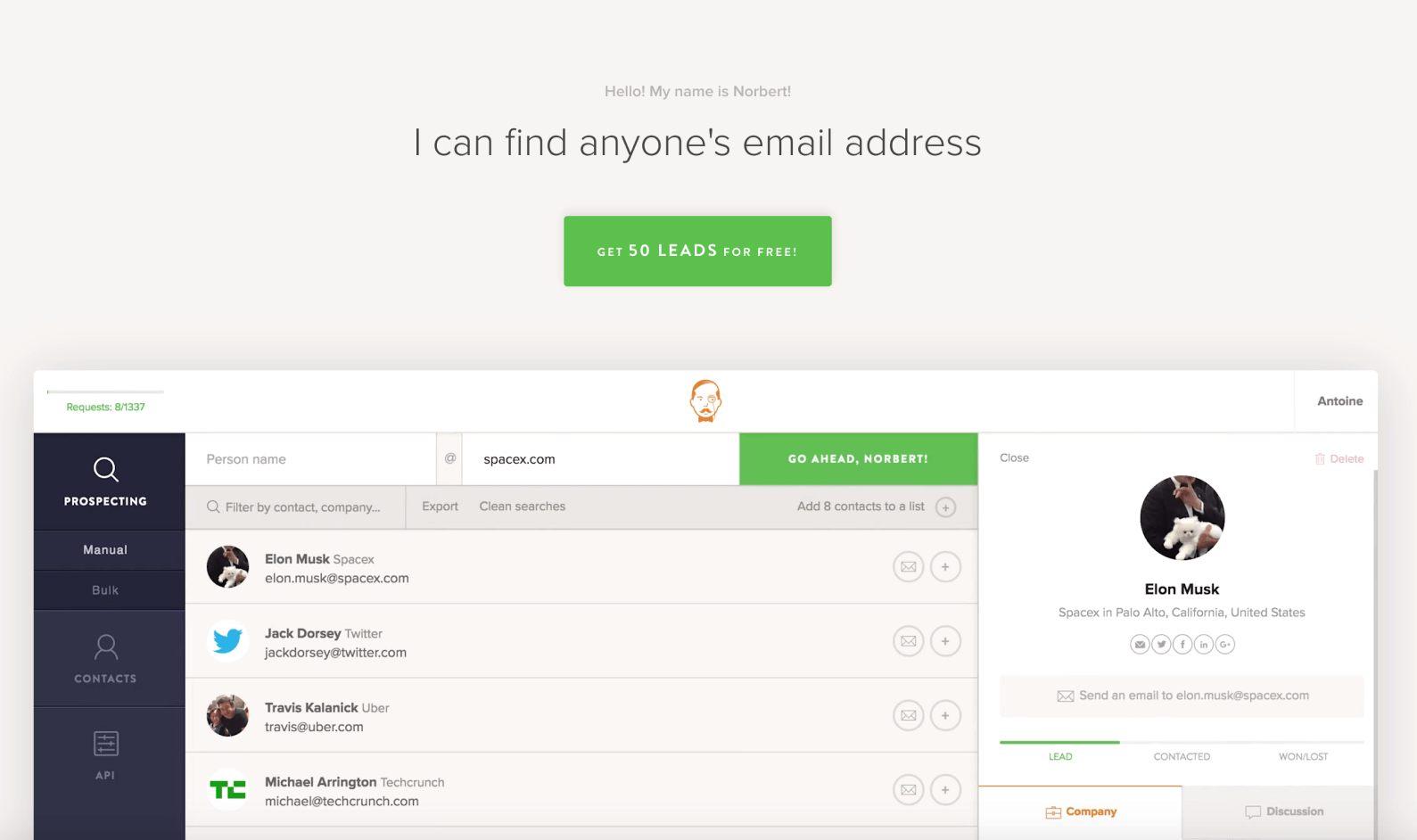
FindThatLead – Another Specialized Email Finder That Lets You Search By Company Name
Another alternative to Hunter.io, FindThatLead enables users to try out their search feature for free. You can type in almost any company you fancy, and FindThatLead will provide you with the appropriate email address. The only caveat is you’ll need to sign up first. Paid options range from $29 to $399 per month, depending on the number of users and whether you want a simple package or all the bells and whistles.
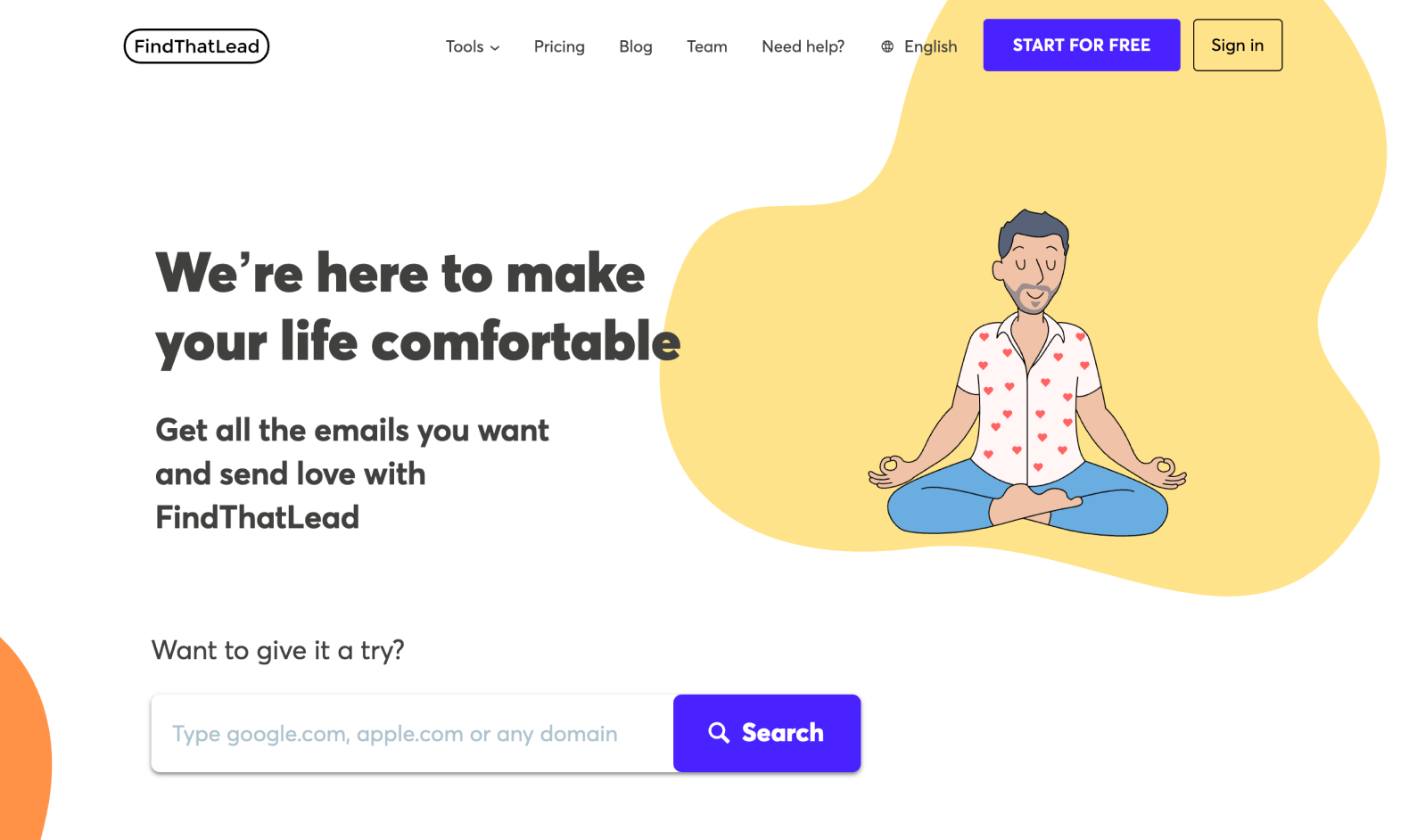
Enriching and Gathering Sales Lead Information
Knowing your leads before making the first contact is an important part of sales prospecting. The following tools can help:
UpLead – Search a Fully Pre-Populated Database With Prospect Information Ripe for the Picking
With a fully populated database of essential information, UpLead makes client prospecting a breeze. We offer three pricing options for any budget and a 7-day free trial.
Detective.io – Automate Your Prospect Research (So Your Sales Reps Have More Time to Sell)
Detective.io is a handy tool that sifts through thousands of records to locate valuable information about your lead list—freeing your sales reps up to spend time selling (and less time researching). There’s no pricing information on their website, but a demo is available if you’d like to try them.
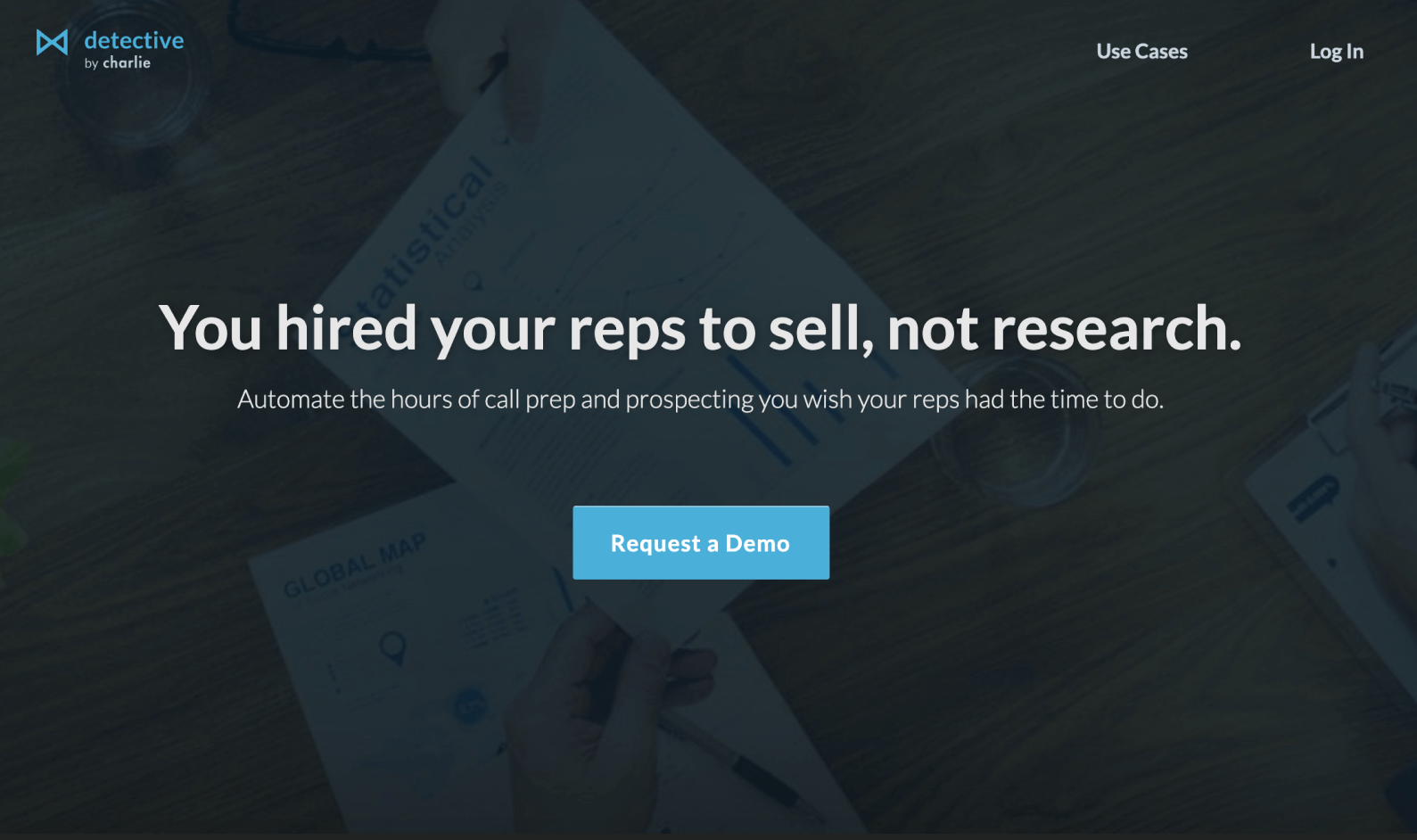
Make Cold Calling Easier with Automation
Voiptime Cloud ‒ Increase the number of live conversations by up to 300%
Voiptime Cloud is an all-in-one cold calling software with a handy CRM system. This gives the sales team essential productivity, performance-tracking tools, and easy access to necessary lead information. It also automates the routine dialing process. Additionally, you can receive a local DID phone number to increase your reach rate. Voiptime Cloud is especially useful for companies processing high outbound calls or working with clients internationally.
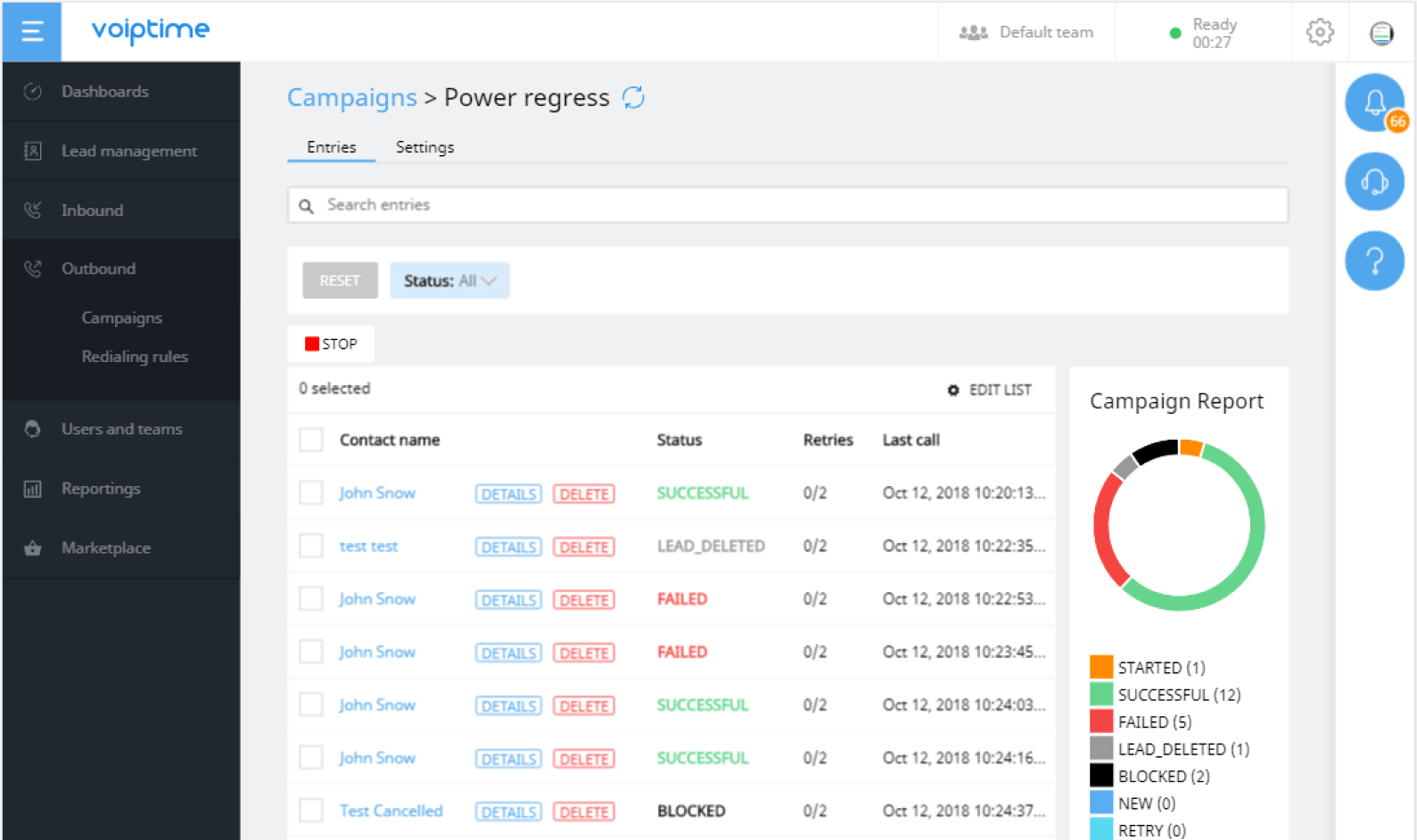
Make Scheduling Sales Meetings Easier
Turn your scheduling into less of a chore with these automation options.
Calendly – Schedule Your Meetings in Just a Few Clicks
Calendly lets you set your available time slots and allow clients to book a meeting with just a few clicks. Generating a special link, Calendly automatically slots the meeting into both your and your client’s calendars after they select one of your available time slots. Calendly is an easy and affordable tool, offering free and paid monthly plans ranging from $8-12.
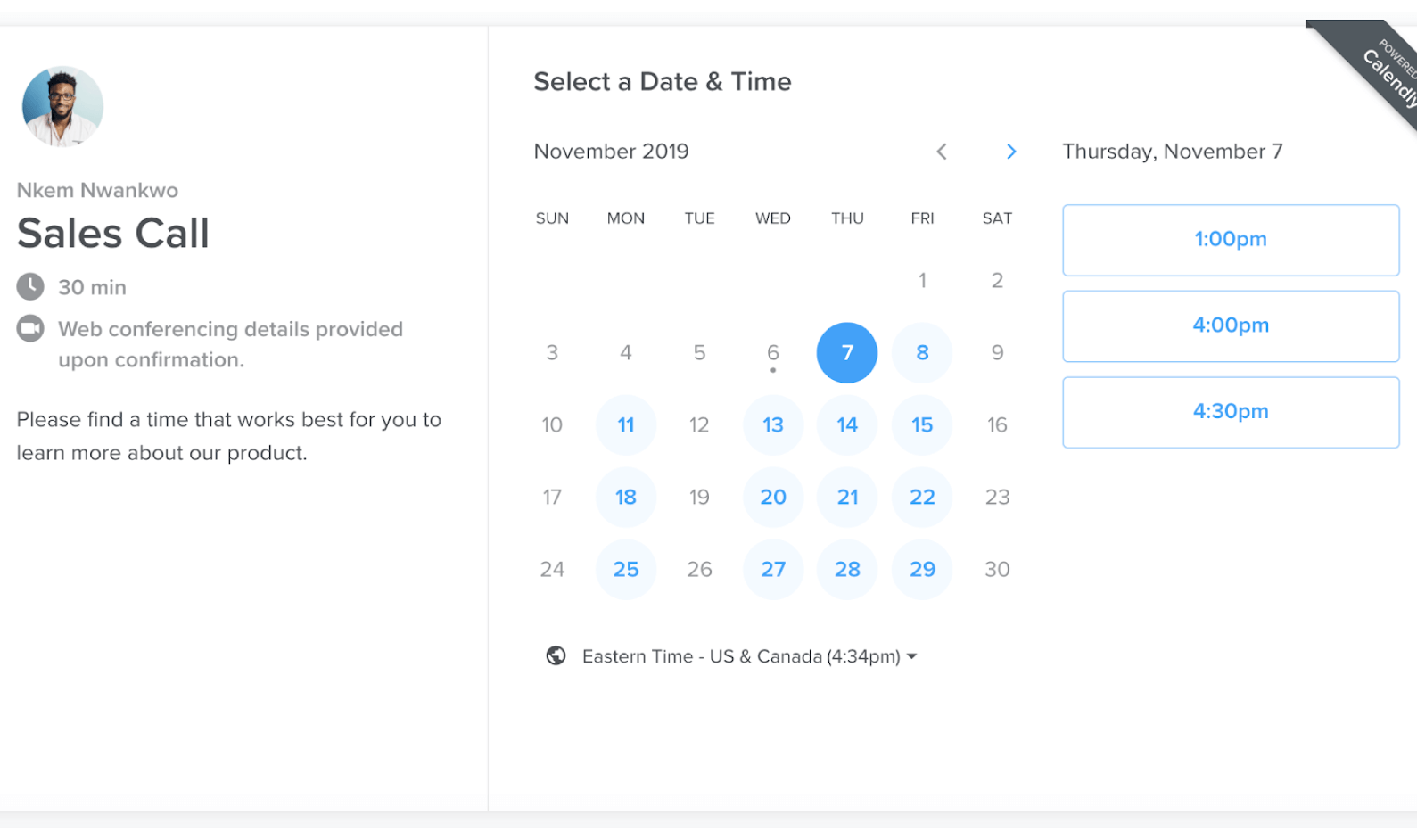
Clara – Set Up Your Own Automated Meeting Flows
Clara is a helpful tool for planning out meeting flows—sequences of meetings and follow-ups.
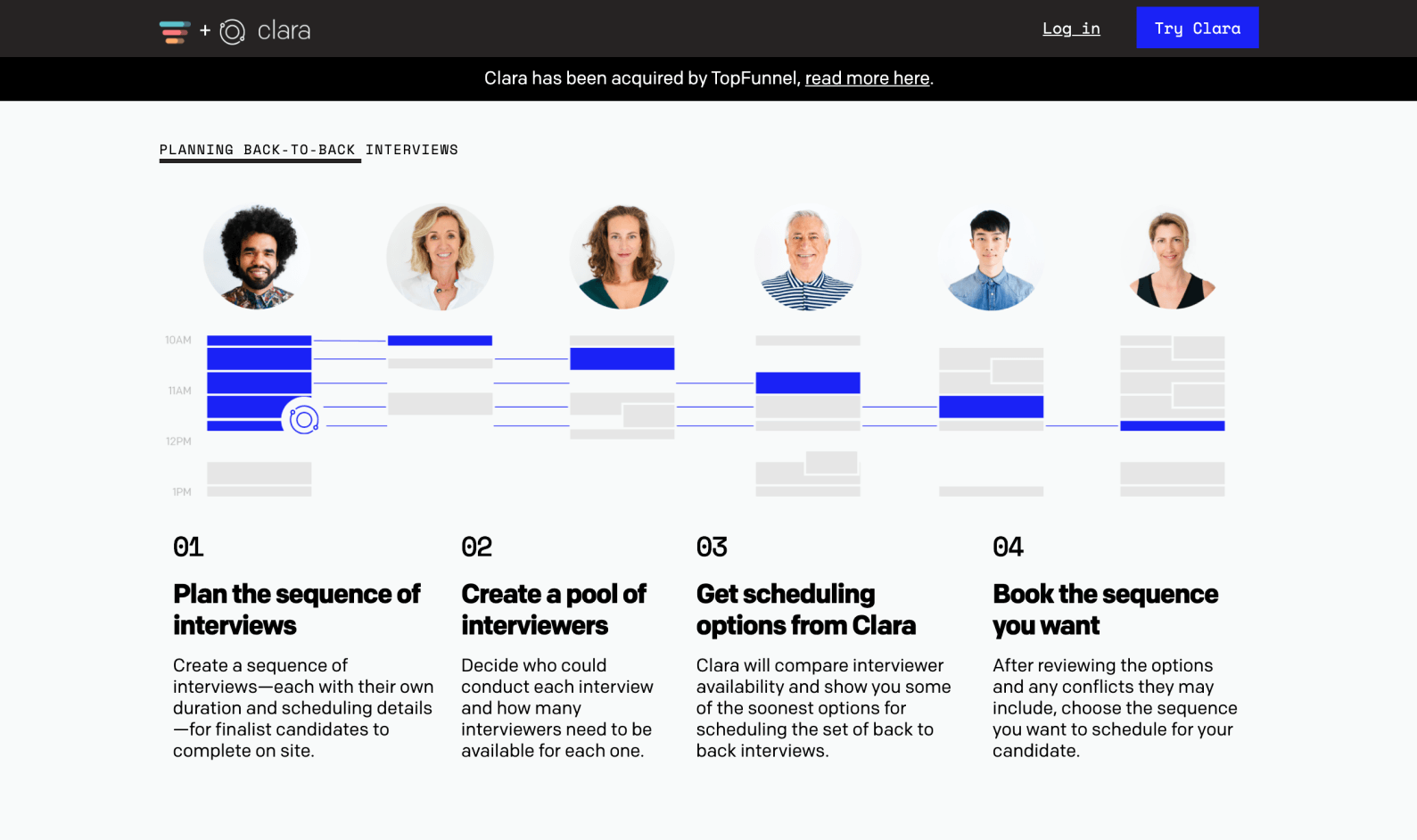
Assistant.to – Schedule Meetings With Just One Email
Assistant.io is another scheduling automation tool that lets you book meetings with a single email. It’s also free to install for Gmail.
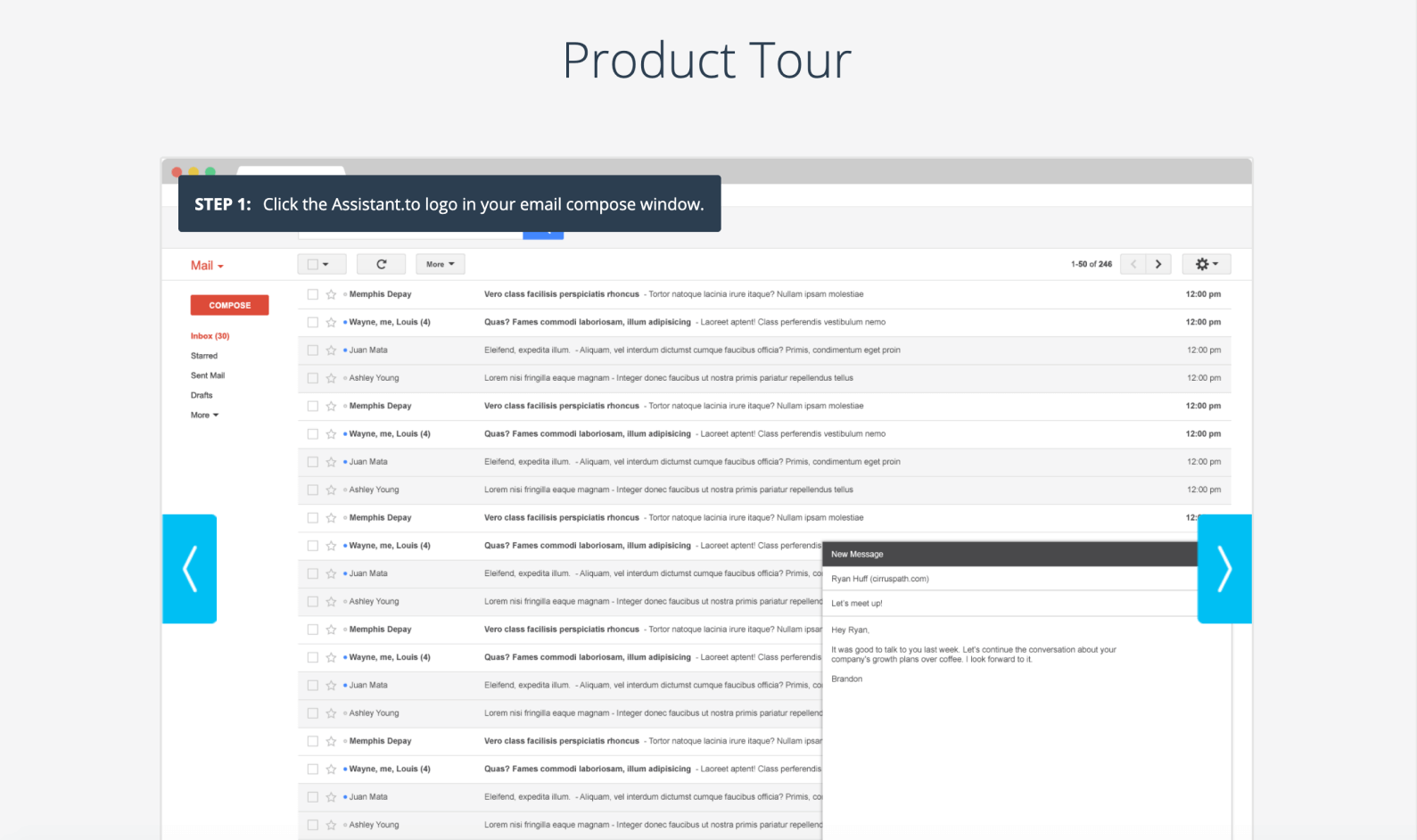
AcuityScheduling – A Personal Assistant That Books Your Meetings for You
AcuityScheduling gives clients a real-time view of your availability, allowing them to book a slot and even pay for your time online. It’s free to use but has monthly plans for $15, $25, and $50.
Drift – A Chatbot Which Schedules Meetings (And Captures Leads)
Did you know that if you wait more than five minutes to respond to an inquiry, you are 10 times more likely to lose that lead forever? Drift provides the perfect solution in the form of chatbots, which can schedule meetings and engage with your website visitors 24-7. It may even help you qualify and capture more leads.
Think about it this way: Your website visitors are already interested in learning more about your product or service, so why not capture as many of them as possible? These leads are just prime for the picking, but they could vanish if you fail to engage with them on time.
Drift is a great tool for engaging with your leads and capturing their contact information and other useful intel. For example, you can program your chatbot to ask visitors if they’re searching for a specific product or service or what in particular brought them to your website.
Drift also helps to improve user experience by making your website information more easily and conveniently accessible.

Pricing ranges from $0 up to $1000 per month, depending on the needs and size of your company.


Make Sending Sales Emails a Breeze
After creating a promising list of leads and gathering valuable information, it’s time to send those emails! Of course, you could use Gmail to reach out to your prospects individually. However, numerous apps will help you automate the process. Here are a few we suggest:
PersistIQ – Manage Your Emails Simply And Intuitively
PersistIQ is a simple tool that lets you quickly and easily create campaigns and individual email blasts. They offer 3 plans ranging from $40 to $120 per month.
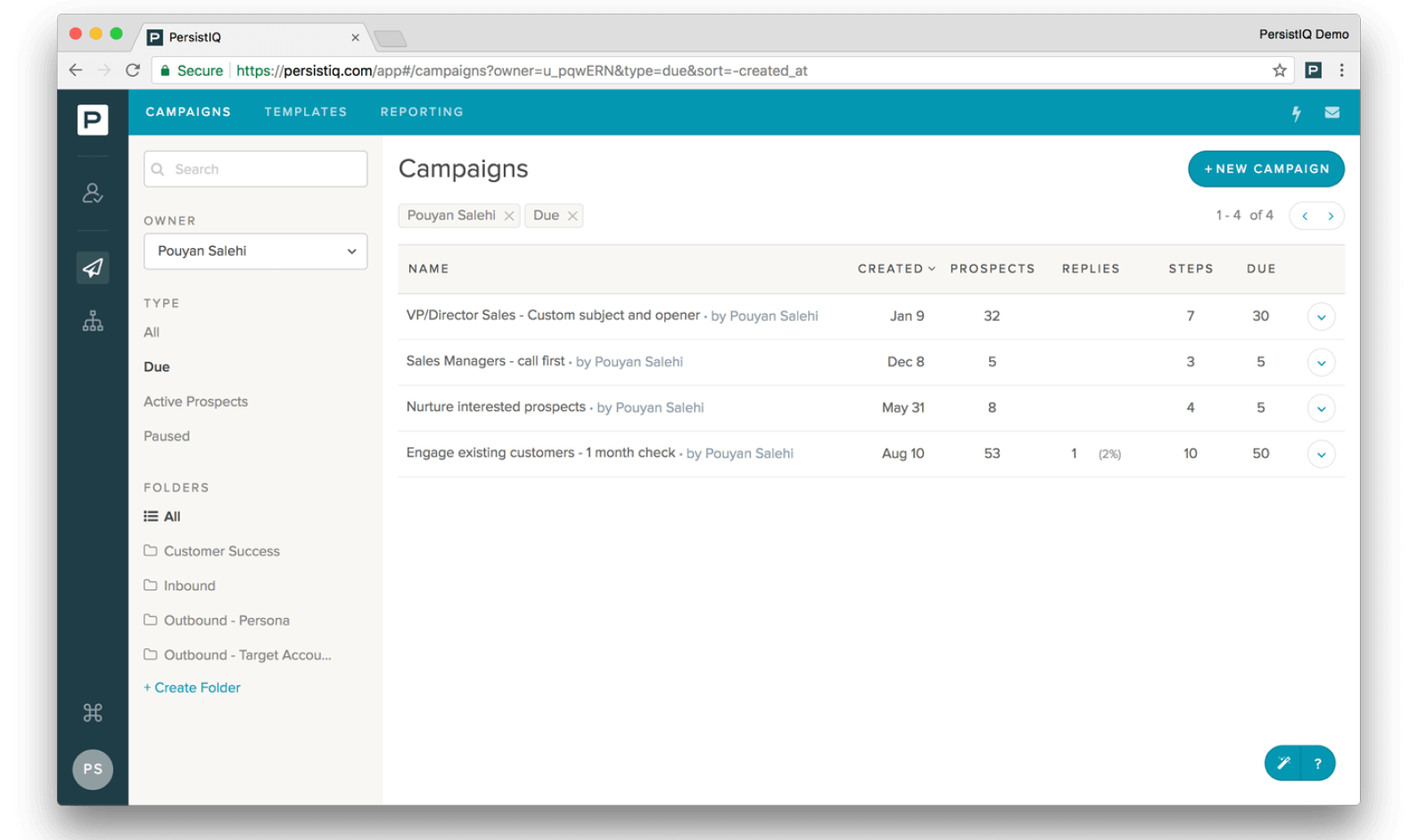
Boomerang – Future-Date Emails, Set Reminders, and More
Boomerang is a great tool that hints at email effectiveness while you type. You can also schedule emails to be sent in the future and set reminders for yourself to make sure nothing falls through the cracks. Boomerang offers a free plan and paid options ranging from $4.99 to $49.99 per month.
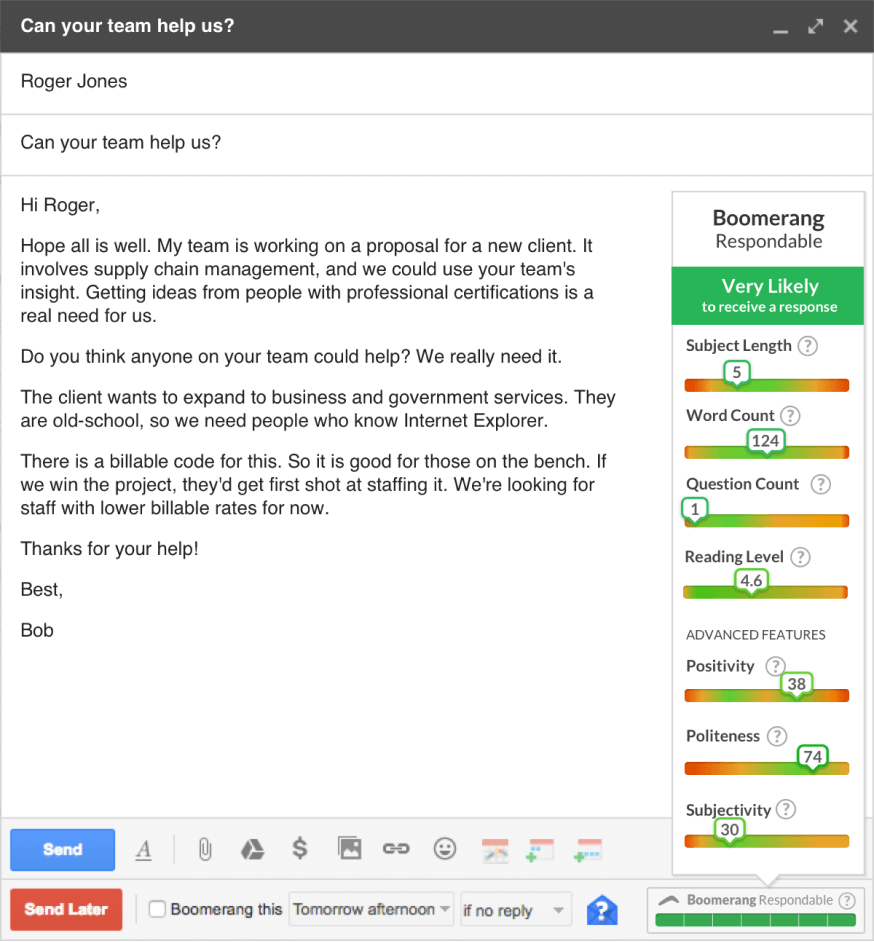
Mailshake – Specifically Designed to Power Your Cold Campaigns
With a Mailshake membership, you’ll access many proven outreach templates and helpful tools like automatic scheduling and split testing capabilities. Mailshake offers two packages, the Basic for $29 per month and the Pro for $49 per month.
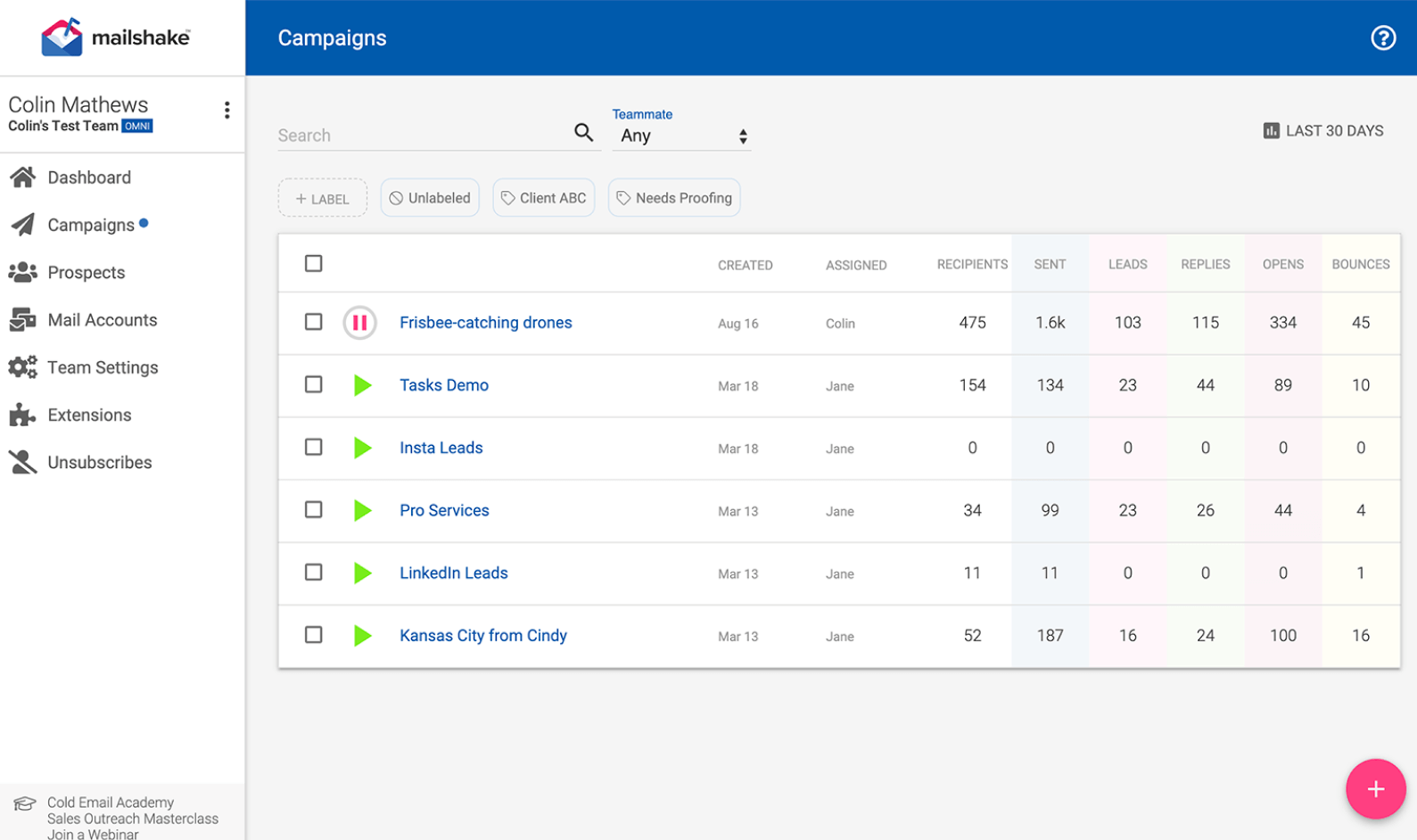
Reply – The “Sales Acceleration Platform” for Email Management
Reply is a great tool for automating your outbound lead generation and making it run “on autopilot” (their words). Reply offers business plans for $200-500 per month. Enterprise solutions are also available.
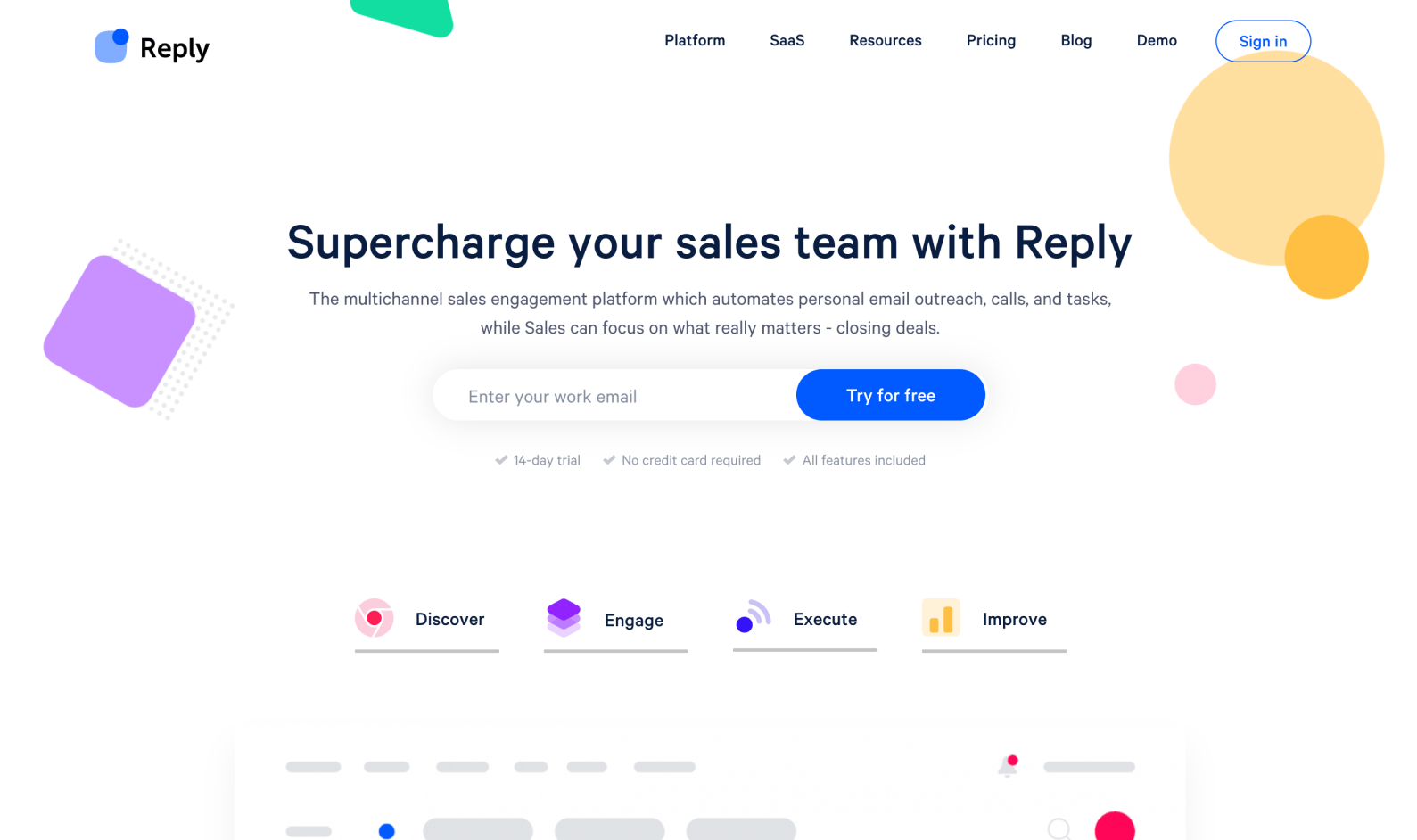
Sales Prospecting: Back to You
No one ever said sales prospecting was easy, but you can improve the process by:
- Prioritizing quality leads over quantity.
- Taking the time to qualify your leads and evaluate how they stack up as an ideal customer.
- Ensuring you only pursue the strongest fits for your product or service, who can genuinely benefit from your offering.
- Doing your due diligence in researching your prospects before contacting them.
- Becoming a trusted authority or thought leader in your industry.
Adopting the right approach to sales prospecting techniques will help you go even further, especially if you have the proper tools in place to automate and improve the process. Whether using chatbots to engage and capture new leads or tapping into UpLead’s invaluable contacts database, there are systems to help you improve every step of the sales prospecting process.
This article has given you an overview of how to prospect, which is an essential component of sales development. Be strategic, pick the best tools, and follow the sales prospecting tips we’ve outlined above, and you should have a steady stream of leads and prospects to nurture.
Now go forth and prospect.








